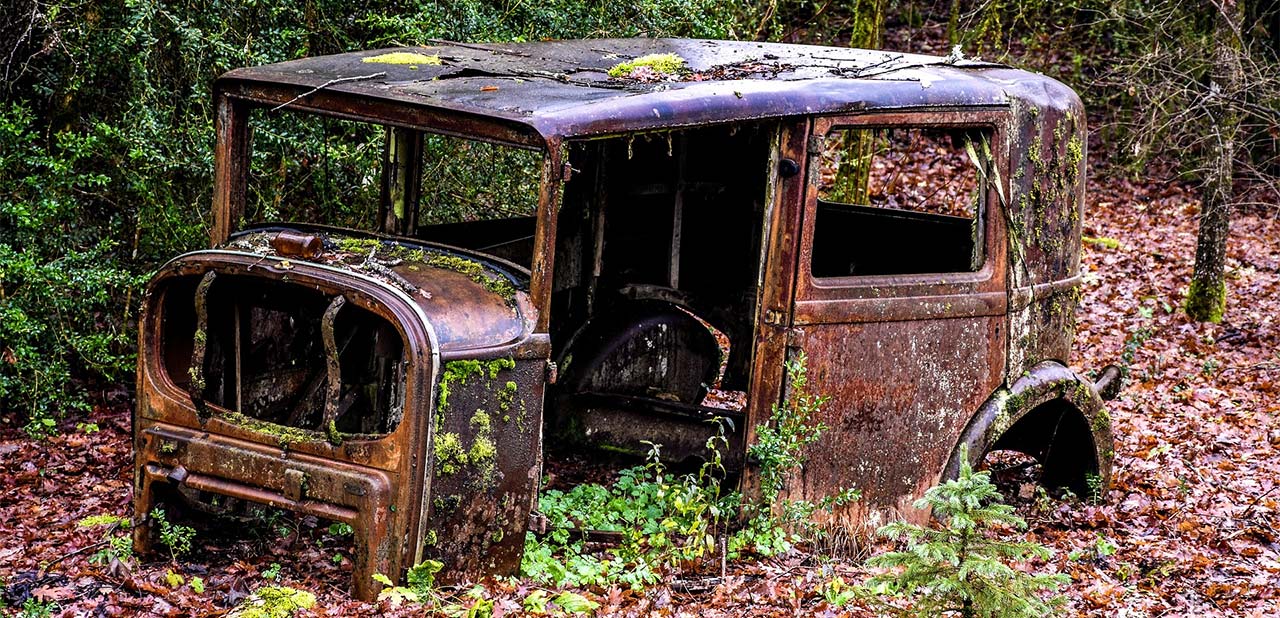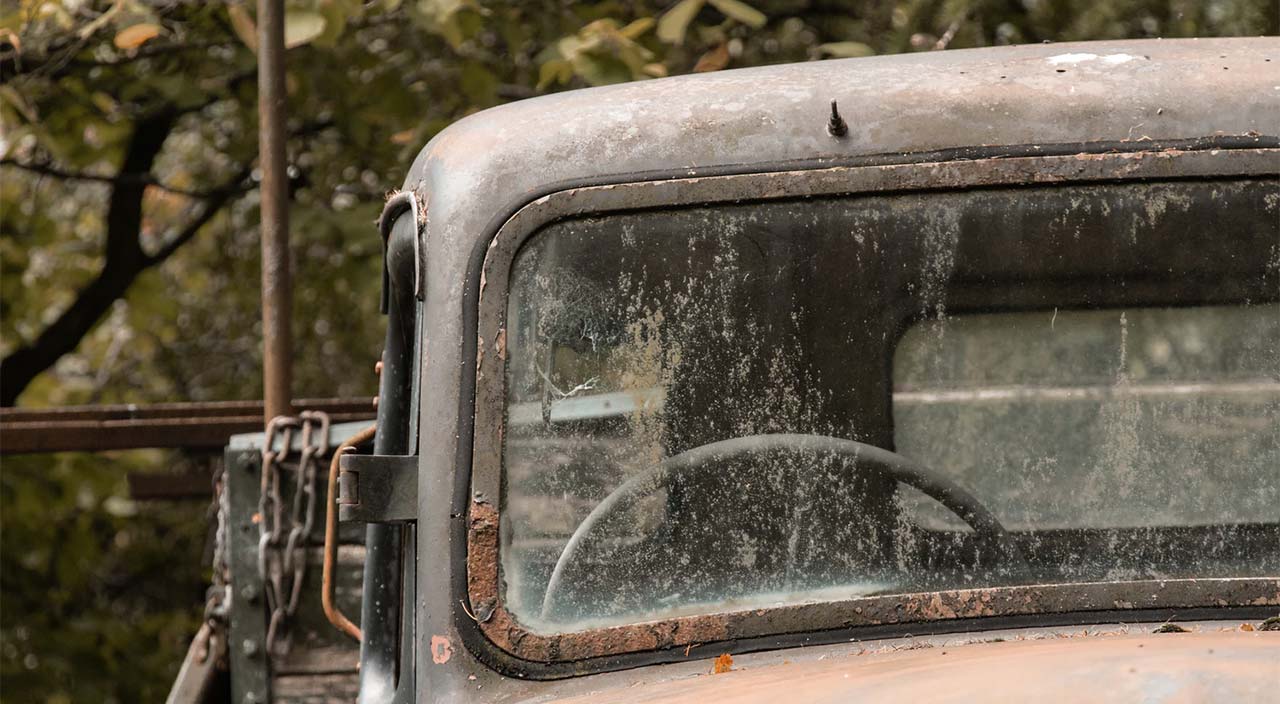How to Remove Mold from a Car Interior
Posted by Dale Edward Johnson on Dec 8th 2020
Mold stinks. Its foul odor can ruin the atmosphere of your classic car. Mold is also unsightly and its dark round patches spoil the appearance of your car.
But mold can be worse than just unpleasant to look at and smell. Some molds, like black mold, can also be dangerous if inhaled, especially for infants, the elderly, and those with allergies or weakened immune systems. Mold can cause a range of health issues, including bloating, breathing problems, fatigue and headaches.
That’s why it’s important to be able to find mold, get rid of it – and make sure it doesn’t come back.
What Is Mold?
Mold is a fungus that can grow almost anywhere that is damp and dark, and it can spread easily and quickly.
The first sign of mold is the bad smell; think of sour milk. You can also see mold as dark, circular spots that may be white, grey, brown, green or black – or a combination.
What Causes Mold?
Mold can form if moisture gets in and sits for a long period of time on a variety of soft materials. Mold can also form if you spill a drink in your car and don’t wipe it up. Damp cloths or towels bunched up in a car can also be a breeding ground for mold. Mold is more likely to grow in warm, humid, dark areas.
Common Spots For Mold
Mold is most likely to form on or under upholstery, seatbelts, carpets, dashboards, gloveboxes, consoles, door panels, rear window package shelves and truck liners, as well as around any trash or old cloths. Also, check the trunk, and pull back the carpeting or liner. If the seal to your trunk is not good and moisture gets in, the damp and dark interior is ideal for mold to grow. Any area that gets little or no fresh air or sunshine is more likely to be an ideal area for mold to grow.
Prepare By Getting Safety Equipment
Some molds are completely harmless, while others, like black mold, can be dangerous and should be carefully and safely removed. That’s why it’s important to wear protective equipment when removing mold. Wear gloves to protect your hands, a mask to cover your nose and mouth so you don’t inhale mold spores, and eye and face protection.

Removing Mold
The first step in removing mold spores is to use an old brush (an old toothbrush is ideal for tight areas) to break up the larger mold clusters. Use short strokes to avoid spreading the spores around. After brushing, use a vacuum cleaner to suck up the debris. Sometimes an industrial-strength vacuum cleaner at a commercial car wash will have more power than a home unit. As well, you may not want your vacuum cleaner to be filled with mold spores. Vacuuming will remove the large sections of mold. However, this physical work will not remove all mold spores. To get all of them you will need chemicals.
One way is to use plain white vinegar, an acid, which can kill mold and stop it from growing back. You can either dilute it with water or, if the mold is severe, use it straight. Brush or spray the vinegar directly onto the mold, as well as one or two feet in the surrounding area. Then use a brush to scrub in the vinegar. Let it soak in for about 15 minutes so the vinegar gets completely absorbed by the mold, giving it time to kill the mold spores. This can be used on all kinds of seats – cloth, leather and vinyl. Next, use a vacuum to suck up what’s left.
Another approach is to use non-iodized salt, which can be mixed into a bucket of water. Then brush or spray this mixture onto the surfaces, and again go one or two feet beyond the area of the visible mold. Let it dry for a few minutes, with direct sunlight and air circulation if possible. After it dries, use a brush or vacuum to remove it.
Be careful not to use any products with bleach or ammonia because they could damage and stain your car’s interior.
After The Cleaning
After scrubbing and vacuuming your car, move it outside, open all the windows and doors, ideally on a hot, sunny day. If that’s not possible, find an extension cord and then connect a fan or a hairdryer to dry the interior. But be careful not to overdo it or else you could damage the carpets, leather, plastic, upholstery, or vinyl. It’s essential that every area that was cleaned is dried completely.
If you find an unpleasant vinegar or salt smell, there are a few options. You might sprinkle some baking soda in the area where the mold was, and then vacuum it. Another approach is to try an air freshener, either a spray or a freshener that hangs from the vents. You can also leave your vehicle outside in the sunshine with the windows rolled down. Even in areas where there is winter, this method can be effective – providing there is no snow in the forecast.
In some cases, mold cannot be removed completely, or it may have damaged some parts of your car. Fortunately, if this should happen, there are classic car interior parts, whether you’re looking for a car headliner replacement, auto carpet, car dash parts, your car door panel, auto armrests, glove box parts, car package tray or car sound deadener.

Preventing Mold
Now that your car is mold-free after this intensive cleaning, you’ll want to look at ways to prevent mold from reappearing, so you don’t have to do this cleaning again.
Remember, moisture and darkness are ideal for mold growth. So check the seals around your doors, windows and trunk lid to make sure rain cannot leak in. Make sure your floorboards are solid, so water isn’t leaking in from underneath, and then being absorbed by the carpets. If you do detect any moisture, especially after rain, wipe up any moisture, and if possible leave your vehicle in the sun with the windows down.
Another way to reduce the chance of mold forming in your car is to not eat or drink in your car. While that’s a common practice, it’s not a good idea. Any liquids that get spilled can encourage mold. Should you spill any liquid, make sure you wipe it up immediately. An old towel can be helpful to absorb moisture. A hairdryer can help to dry carpets and upholstery.
Rubber floor mats over carpeting can also reduce the amount of moisture that seeps into the carpets, whether caused by rain or snow. But don’t let the rain and melted snow accumulate on the rubber mats because it can eventually seep into the carpets. As well, the evaporation will keep your car very humid, encouraging the growth of mold. If the rubber floor mats get wet, wipe them with a towel, then remove them and then let the carpets dry. Make sure the wet towel is not rolled up and tossed on the backseat.
If you steam clean the carpets in your car, or you have seat covers that you remove and toss in the washing machine, make sure everything is completely dry, otherwise, the dampness can lead to the growth of mold.
If your classic car has mold, it’s time for a good, deep cleaning – and thorough drying. And if any vintage auto parts have been damaged by mold, and can’t be cleaned to match the rest of the car, remember that Collectors Auto Supply is the best resource for automobile restoration supplies and all kinds of classic car interior parts.

